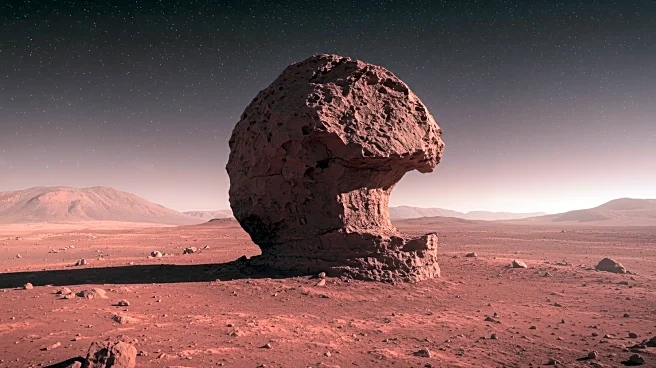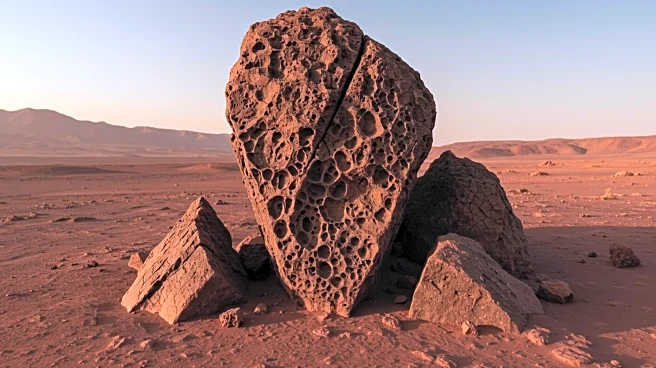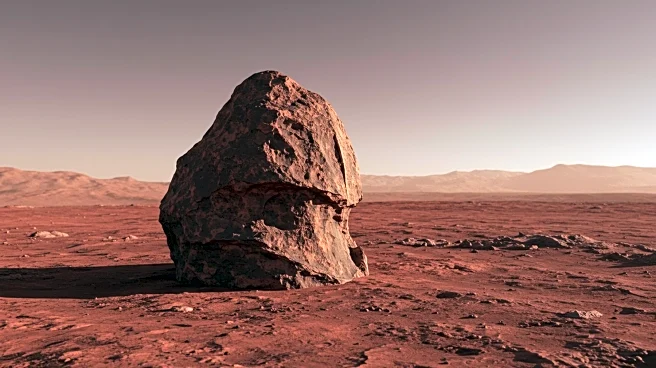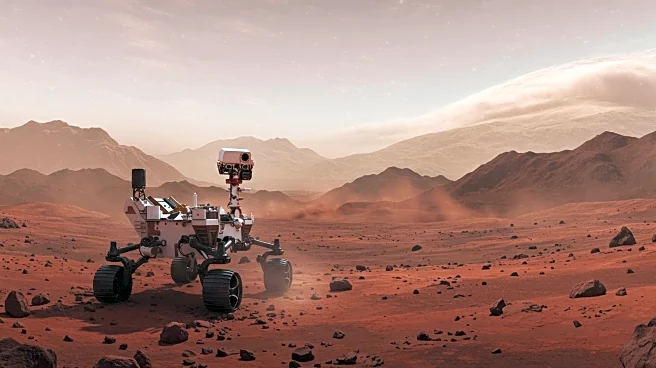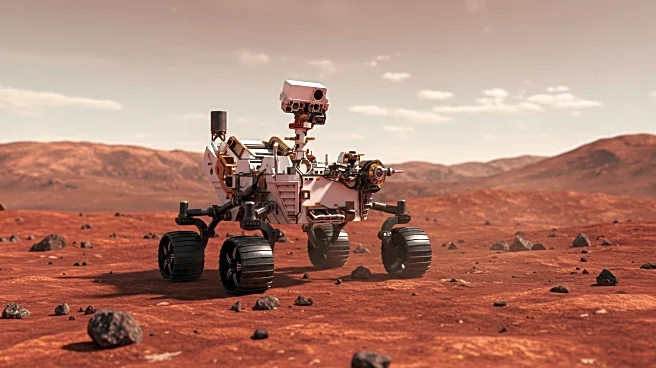What is the story about?
What's Happening?
NASA's Perseverance rover has captured images of a rock formation on Mars that resembles a battle helmet. The object, named Horneflya, features a pointed peak and nodular texture, similar to historical armor. These textures are formed through natural processes such as volcanic activity and chemical weathering. The discovery was made using the rover's Mastercam-Z instrument, and the rock is composed primarily of spherules, which are common in Martian geology.
Why It's Important?
This discovery highlights the diverse geological features present on Mars, offering insights into the planet's surface processes. The presence of spherules and nodular textures provides clues about Mars' volcanic and weathering history. Such findings are crucial for understanding the planet's geological evolution and assessing its potential for past life. The study of these formations can inform future exploration strategies and the search for biosignatures.
What's Next?
The Perseverance rover will continue to explore Mars, focusing on areas with unique geological features. Scientists will analyze the composition and formation processes of these rocks to better understand Mars' environmental history. Future missions may target similar formations to investigate their implications for Mars' habitability and the presence of water in its past.
AI Generated Content
Do you find this article useful?
